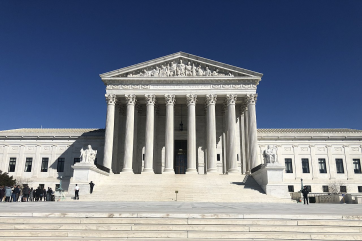'Younger Dryas' Meteor Impact Theory Traced to Quebec, Canada but Scientists Still Cannot Locate Crater
By Russell WesterholmNearly 13,000 years ago, a giant meteoric crash caused a rain of hot melted rock in an area near Quebec, Canada that had previously been a solid ice sheet, Live Science reported.
In a new study, published Monday in the journal Proceedings of the National Academy of Sciences, scientists traced the geochemical signature of the comet rocks back to their original landing spot.
The research team found their way to the Gulf of Saint Lawrence, in northeastern Canada and near North America's Atlantic coast. The find might add more insight to a climate shift theory known as the "Younger Dryas."
"We have provided evidence for an impact on top of the ice sheet," said study co-author Mukul Sharma, a geochemist at Dartmouth College.
The Younger Dryas theory states the Earth abruptly entered a climate shift toward a glacial period 12,900 years ago. A glacial flood from the St. Lawrence and Mackenzie rivers were believed to be the cause of shutting down the North Atlantic Ocean currents, which in turn, caused massive cooling.
In 2007, a separate group of scientists theorized a meteor or comet sparked the Younger Dryas, but no crater has been found to validate the theory.
Sharma said the particles he and his team analyzed could be thousands of years too old to be from the Younger Dryas period, but the discovery could prove the meteor impact theory.
"We are assuming they are Younger Dryas, but [dating] is one of the things that should be done better," Sharma told Live Science.
Sharma and his team are not having much luck finding evidence linking the new findings, or any previous ones definitively to the Younger Dryas period, but he remains confident.
"Clearly these things were produced in an impact fireball, but we didn't find any evidence of meteorites," Sharma said. "We have for the first time narrowed down the region where a Younger Dryas impact did take place, even though we have not yet found its crater."
Not involved in the study, Nicholas Pinter, a geologist at Southern Illinois University in Carbondale, called the study "fringe science."
"At this point, the pro-impact literature is fringe science being promoted by a single journal," he said, pointing to the lack of traction in the scientific community Sharma's findings has received.








